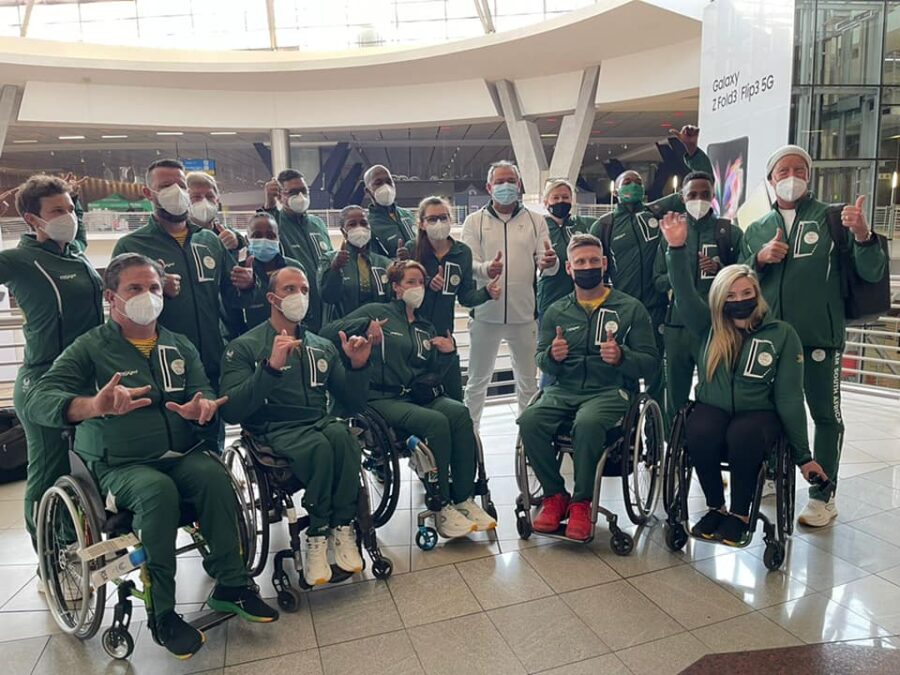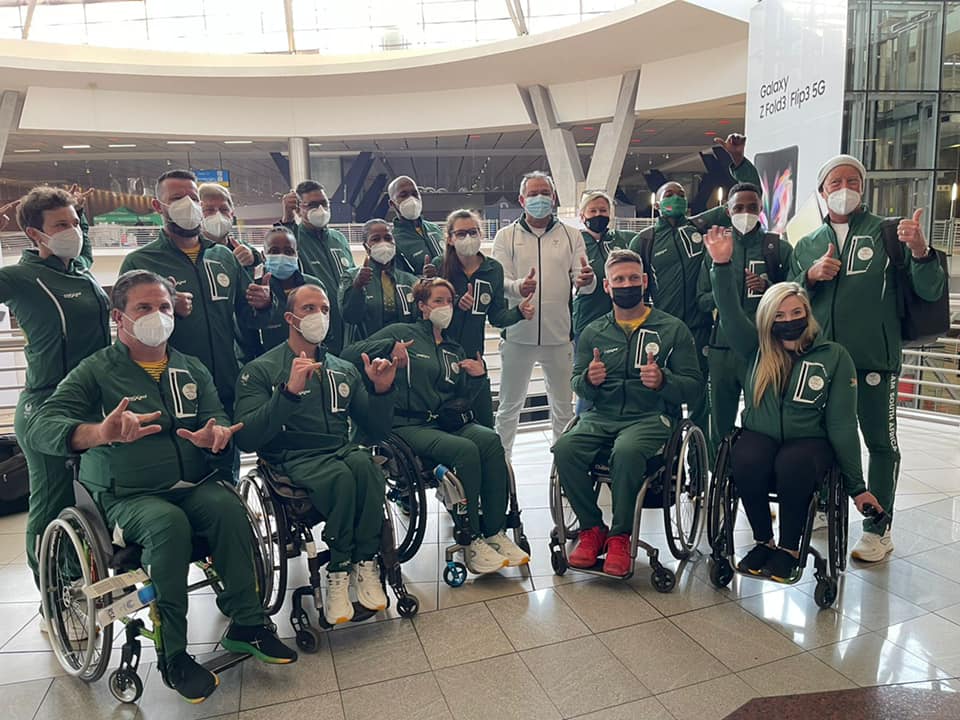
SA’s Paralympic Team Heads to Tokyo: All You Need to Know
South Africa’s Paralympic team have headed off to Japan for the Tokyo 2020 Paralympics. Here’s a guide to the events our 34 SA athletes will be competing in, along with an explanation as to what each category classification means. But first, here’s a wonderful message from Olympic gold-medal winner, Tatjana Schoenmaker for the SA Paralympic […]

South Africa’s Paralympic team have headed off to Japan for the Tokyo 2020 Paralympics. Here’s a guide to the events our 34 SA athletes will be competing in, along with an explanation as to what each category classification means. But first, here’s a wonderful message from Olympic gold-medal winner, Tatjana Schoenmaker for the SA Paralympic team:
A special message from Olympic Gold medalist @TRSchoenmaker on behalf of Team SA’s Olympic team to all the Paralympic athletes that will represent Mzansi at #Tokyo2020🇿🇦@Paralympics @Olympics pic.twitter.com/aA5hMIpBPB
— Team South Africa (@TeamSA2024) August 15, 2021
PARA ATHLETICS
In athletics, the ’T’ stands for track and the ‘F’ stands for field.
Ntando Mahlangu (200m, long jump)
T61: Athletes with a leg amputation, who compete with prosthetics in a standing position
Charl du Toit (100m, 200m, 400m)
T37: Co-ordination impairment, for athletes competing in standing position
Dyan Buis (100m, 400m, long jump)
T38: Co-ordination impairment, for athletes competing in standing position
Reinhardt Hamman (javelin)
F38: Co-ordination impairment, for athletes competing in standing position
Kerwin Noemdo (shot put)
F46: Athletes with arm deficiency, impaired muscle power or impaired passive range of movement in arms, with athletes competing in a standing position
Mpumelelo Mhlongo (100m, 200m, long jump)
T44: Athletes with a leg deficiency, leg length difference, impaired muscle power or impaired passive range of movement in the legs, with athletes competing in a standing position
Tebogo Mofokeng (100m, 400m)
T62: Athletes with a leg amputation, who compete with prosthetics in a standing position
Tyrone Pillay (shot put)
F63: Athletes with a leg amputation, who compete with prosthetics in a standing position
Daniel du Plessis (100m, 400m)
T62: Athletes with a leg amputation, who compete with prosthetics in a standing position
Puseletso Michael Mabote (100m, long jump)
T63: Athletes with a leg amputation, who compete with prosthetics in a standing position
Ndodomzi Ntutu (100m)
T12: Vision impaired athletes
Anrune Weyers (100m, 200m, 400m)
T47: Athletes with arm deficiency, impaired muscle power or impaired passive range of movement in arms, with athletes competing in a standing position
Sheryl James (100m, 200m, 400m)
T37: Co-ordination impairment, for athletes competing in standing position
Simone Kruger (discus)
F38: Co-ordination impairment, for athletes competing in standing position
Ntombizanele Situ (javelin)
F54: Athletes with impaired muscle power, restricted range of movement, limb deficiency or leg length difference, with athletes competing in seated position eg. with cervical cord injury, spinal cord injury, amputation, functional disorder
Louzanne Coetzee (1500m, marathon)
T11: Vision impaired athletes
Johanna Pretorius (100m)
T13: Vision impaired athletes
Liezel Gouws (200m, 400m)
T37: Co-ordination impairment, for athletes competing in standing position
ARCHERY
Shaun Anderson
W1: Athletes with an impairment in all four limbs that use a wheelchair
Philip Coates-Palgrave
Open: Combines W2 and ST classes, including athletes who have an impairment in the legs and use a wheelchair or have a balance impairment and shoot standing or resting on a stool
PARA CYCLING
Pieter du Preez
H2: Hand cycling. H class is for athletes competing with a handcycle with impairments such as amputation or paralysis of the legs or motor function impairments and is subdivided into classes H1, H2, H3, H4 and H5
Ernst van Dyk
H5: Hand cycling. H class is for athletes competing with a handcycle with impairments such as amputation or paralysis of the legs or motor function impairments and is subdivided into classes H1, H2, H3, H4 and H5
Toni Mould
T1: T class is for athletes competing on a tricycle with a lack of balance and/or restriction in pedalling due to muscle tension, uncoordinated movements or involuntary movement. It is subdivided into classes T1 and T2
EQUESTRIAN
Philippa Johnson-Dwyer (dressage)
Grade IV: Athletes in Grade IV have a severe impairment or deficiency of both arms or a moderate impairment of all four limbs or short stature
Cayla van der Walt (dressage)
Grade V: Athletes in Grade V have a mildly impaired range of movement or muscle strength or a deficiency of one limb or mild deficiency of two limbs
PARA SWIMMING
S stands for freestyle, butterfly and backstroke events. SB stands for breaststroke. SM stands for individual medley
S1/SB1 to S10/SB10 is for athletes with a physical impairment and S11/SB11 to S13/SB13 is for athletes with a vision impairment. The greater the number the more functional ability the athlete has. S14/SB14 is for athletes with an intellectual impairment
Christian Sadie (50m freestyle S7, 100m backstroke S7, 100m breaststroke SB7, 50m butterfly S7, 200m IM SM 7)
Hendrik van der Merwe (100m breaststroke SB5)
Katherine Swanepoel (50m freestyle S4, 50m backstroke S4, 50m breaststroke SB3, 150m IM SM4)
Alani Ferreira (400m freestyle S13, 100m breaststroke SB13)
TABLE TENNIS
Theo Cogill
Class 10: Table tennis is for athletes with an eligible physical or intellectual impairment. Classes 6-10 are for standing athletes
WHEELCHAIR TENNIS
Players are eligible to compete in the Open division if they have a permanent physical impairment that results in substantial loss of function in one or both legs and that meets or exceeds the sport’s minimum eligibility criteria
Kgothatso Montjane (women’s singles, women’s doubles, mixed doubles)
Mariska Venter (women’s singles, women’s doubles, mixed doubles)
Eliphas Maripa (men’s singles, men’s doubles, mixed doubles)
Leon Els (men’s singles, men’s doubles, mixed doubles)
